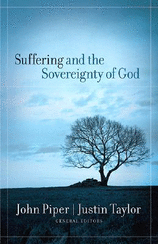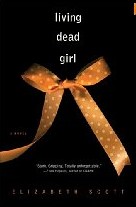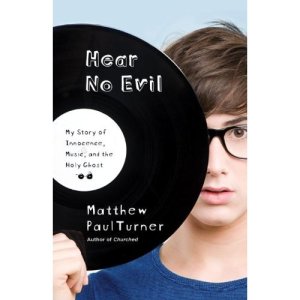I mentioned in a previous post that I got a lot of book vouchers for my birthday. A LOT.
This allowed me to buy a lot of books. A LOT. Why am I blogging about this now, two months after the fact, you may be wondering? Well, it’s kind of in honour of the fact that I’m leaving books blog Five Minutes Peace at the end of the month in order to have more time to write about other things. (NON-BOOK things, if you can believe that.) And it’s kind of because I just didn’t get around to it sooner and am gormless. Mostly the latter.
Anyway. For my birthday, way back when, two friends bought me identical Amazon.co.uk vouchers, with which I got:
- Important Artifacts and Personal Property from the Collection of Lenore Doolan and Harold Morris: Including Books, Street Fashion and Jewelry by Leanne Shapton
This is a graphic novel made to look (brilliantly) like an auction catalogue. Bittersweet and clever, it chronicles the breakdown of a relationship between two hipster-types, one a photographer, the other a New York Times cake columnist. One of those books that make writers sad and jealous that they didn’t think of it first. Not me though. [SHE LIED.]
- Queen of the Road: The True Tale of 47 States, 22,000 Miles, 200 Shoes, 2 Cats, 1 Poodle, a Husband, and a Bus with a Will of Its Own by Doreen Orion
I have loved the idea of travelling round the US in an RV for a really long time. (Remember that episode of Frasier when they travelled in one, albeit not entirely successfully? That kind of cemented things, but when I was little we knew a family who had a small camper van that I was fascinated with, too. And the Geek Brief (now thwarted) Big Trip idea really (vicariously) excited me. The trip in this book isn’t in an RV but a custom-made bus with its own dishwasher, internet and satellite TV (who knew?) but the concept is the same. I expected to absolutely love it but it’s taking me a while to wade through. I don’t find the narrator very endearing but I am enjoying the travel stories. (And by enjoying I mean feeling full of rage and envy that it’s not me, obviously.)
- Telling True Stories: A Nonfiction Writers’ Guide from the Nieman Foundation at Harvard University ed. by Mark Kramer and Wendy Call
I chose this mainly because in contains a previously unpublished piece by Nora Ephron (about why more journalists should become screenwriters and vice versa) but there’s loads of good advice that’s relevant for any writer interested in narrative non-fiction/long-form journalism/American publications.
Then my Dad very kindly, or very Kindle-y (haaaa) gave me some money to buy some e-books. So I got:
- I’m Perfect, You’re Doomed by Kyria Abrahams
The story of a Jehovah’s Witness childhood. Very educational; lots I didn’t know despite having a JW childminder. But it doesn’t really wrap up the author’s story very well (we leave her in a bad place in her life and I wanted to know more – I felt some self-indulgent rambling towards the end could have been cut in order to achieve this). Of course she may be saving it for a sequel, which I’d definitely read.
- Rockabye by Rebecca Woolf
I’m a big fan of Rebecca’s blog, Girl’s Gone Child and had been meaning to read her memoir for some time. Sweet, funny and raw, it’s the story of her unplanned pregnancy (at a time in her life when she was not at all prepared to have a baby). I loved her wriitng and as someone whose life hasn’t gone to plan (althought for different reasons) I really related.
- The Best Technology Writing 2009 ed. by Steven Johnson
I know, kinda geeky. But there’s some great writing in here. I’m dipping into this one and have already learned about the recent breach in internet security which almost threatened all of our data and the popularity of the cell phone novel in Japan.
- Don’t You Forget About Me by Jancee Dunn
I loved her memoir, But Enough About Me (highly recommended) and this is her first novel, about a woman caught up in ’80s nostalgia after the end of her marriage. This is so well-drawn that some bits were painful to read but I really enjoyed it, especially the main character’s ageing talk show host boss, Vi, who is from another era and so full of life. I really hope she’s based on a real person.
- The Joy Diet: 10 Daily Practices for a Happier Life by Martha Beck
I’ve been a Beck fan for a few years now, but this is the book of hers that really makes the most sense to me. I’m still on practice one but I’m going to keep trying.
- The White Tiger by Aravind Adiga
I chose this for February’s book club pick. Then I ended up regretting it. It’s REALLY hard work.
- If You Have to Cry, Go Outside by Kelly Cutrone
Anyone who has seen Kelly on The Hills, The City or her new show Kell on Earth (ha) will know how scary she can be. But she’s also pretty amazing. This is her story of moving from a small town to make it in New York and I was surprised to find how compassionate she feels towards other women trying to fight their way up the ladder: she doesn’t want to be friends with her employees, but she does want to help them out.
Then, as my Dad said he didn’t mind if I got a mix of e- and paper books, I decided to get secondhand print versions of books I’d been wanting for a while but which were too expensive to buy new. So I bought:
- Letterati by Paul McCarthy
Which is about the world of competitive Scrabble. I read a couple of chapters then moved on to some other stuff but I’ll go back. It’s interesting stuff.
- I’m Down by Mishna Wolff
I kept seeing reviews of this and it sounded really great and funny… and it WAS. It’s about Woolf’s father and how he wanted to raise her and her sister to be down, to be cool, to fit in, even as white people in an all-black neighbourhood and poor people in an all-white upper-class school. Mishna didn’t seem to belong in either place and her rendering of events is hilarious. But there is a tinge of sadness to the funny, too – she grew up hungry and cold, albeit stoical.
- Get Known Before The Book Deal by Christina Katz
I keep reading articles by Katz (mainly in Writer’s Digest) and was curious to see what I could learn about writers and self-promotion. So far: quite a bit.
I also got a new copy of:
- The Grammar Devotional: Daily Tips for Successful Writing from Grammar Girl by Mignon Fogarty
If you haven’t heard of Grammar Girl (where have you been?) it’s a massively successful podcast about yes, grammar, and this is the second spin-off book. I haven’t read much of it yet. But I WILL.
In non-birthday book related news, I’ve just finished Julie Klam’s very good Please Excuse My Daughter (she’s Jancee Dunn’s best friend, incidentally – I heard about her from Dunn’s first book) and now I need to race through Vampire Diaries for the March book club. Phew.
Let’s not even talk about all my overdue library books, most of which I haven’t read… Oh, and my mum got me some money to spend at Amazon for my birthday too (people know what I like), but I got DVDs with that. (More on which, later. Probably much later, let’s be realistic here.)




 Steering Through Chaos is not so much a practical manual, but a general book filled with basic leadership principles that can help not only pastors, but anyone heading an organization during transition. Scott hits key points like identifying turning points and transitions, leading with a clear vision, timing your change, being authentic, the importance of prayer, and celebrating as you go.
Steering Through Chaos is not so much a practical manual, but a general book filled with basic leadership principles that can help not only pastors, but anyone heading an organization during transition. Scott hits key points like identifying turning points and transitions, leading with a clear vision, timing your change, being authentic, the importance of prayer, and celebrating as you go. Martha Stewart’s Wedding Cakes
Martha Stewart’s Wedding Cakes The Chronicles of Vladimir Tod: Ninth Grade Slays
The Chronicles of Vladimir Tod: Ninth Grade Slays

 What are you reading? What did you know about the book before reading? Many years ago I asked a friend if he had read a recent best seller. His answer was that with all the classics out there he had no time for “fiction.” He was an attorney and I was tempted to ask about the “fiction” in his legal briefs. Though I disagree with his comment it got me to thinking about what books we read and why.
What are you reading? What did you know about the book before reading? Many years ago I asked a friend if he had read a recent best seller. His answer was that with all the classics out there he had no time for “fiction.” He was an attorney and I was tempted to ask about the “fiction” in his legal briefs. Though I disagree with his comment it got me to thinking about what books we read and why. 
 The only one who has taught me more about the sovereignty of God than John Piper is Jonathan Edwards. Dr. Piper does not disappoint in this edited work. The chapters are compiled in a series of transcripts from the 2005 Desiring God Conference, Suffering and the Sovereignty of God. This review serves as a summary of some noteworthy chapters.
The only one who has taught me more about the sovereignty of God than John Piper is Jonathan Edwards. Dr. Piper does not disappoint in this edited work. The chapters are compiled in a series of transcripts from the 2005 Desiring God Conference, Suffering and the Sovereignty of God. This review serves as a summary of some noteworthy chapters. “John Ploughman’s Talk” by C.H. Spurgeon is a down to earth, witty, and swarthy collection of lessons for common people. With selections entitled Idleness, Gossip, Try, and Ignorant People, C.H. Spurgeon’s “Talk” is a fountain of good advice offered in an agreeable and understandable language. “Dont’ count your chickens before they’re hatched,” and “Try, try again,” are just some of the oldstyle anthems used throughout the book. Appropriate for old and young alike, it can be especially poignant for children just entering the working age.
“John Ploughman’s Talk” by C.H. Spurgeon is a down to earth, witty, and swarthy collection of lessons for common people. With selections entitled Idleness, Gossip, Try, and Ignorant People, C.H. Spurgeon’s “Talk” is a fountain of good advice offered in an agreeable and understandable language. “Dont’ count your chickens before they’re hatched,” and “Try, try again,” are just some of the oldstyle anthems used throughout the book. Appropriate for old and young alike, it can be especially poignant for children just entering the working age. “Once upon a time, I did not live in Shady Pines. Once upon a time, my name was not Alice. Once upon a time, I didn’t know how lucky I was.”
“Once upon a time, I did not live in Shady Pines. Once upon a time, my name was not Alice. Once upon a time, I didn’t know how lucky I was.”
 Oooh. This is one of those books that requires a second read. You get to the end and viola! you realize you missed a lot of clues along the way. I had to read some discussions online to get all my questions answered, and now I’m in the process of rereading. This is a mystery and a family story that takes place in Salem, Mass. Towner Whitney, the main character and the narrator for much of the book, comes back to Salem when her great-aunt disappears. In seeking the truth about Eva (the great-aunt), Towner also discovers much about her own past and her immediate family. Since this is a mystery, I can’t include any spoilers, thus I can’t say too much about the story. Trust me, it’s good. Maybe a bit slow taking off, but once into it, I had a hard time putting it down. Now that I know what happens, I’m sure the beginning would be more compelling the second time through. (fiction)
Oooh. This is one of those books that requires a second read. You get to the end and viola! you realize you missed a lot of clues along the way. I had to read some discussions online to get all my questions answered, and now I’m in the process of rereading. This is a mystery and a family story that takes place in Salem, Mass. Towner Whitney, the main character and the narrator for much of the book, comes back to Salem when her great-aunt disappears. In seeking the truth about Eva (the great-aunt), Towner also discovers much about her own past and her immediate family. Since this is a mystery, I can’t include any spoilers, thus I can’t say too much about the story. Trust me, it’s good. Maybe a bit slow taking off, but once into it, I had a hard time putting it down. Now that I know what happens, I’m sure the beginning would be more compelling the second time through. (fiction) The night Savannah brains her stepfather Jack with the frying pan is the night she decides to leave home for good. It doesn’t matter that she has no money and her eight-year-old brother Henry to take care of. It doesn’t even matter that her stepfather will probably follow them. Savannah can stand a few obstacles as well as she can a slap or two. What she can’t stand is the idea of becoming like her mother Alice.
The night Savannah brains her stepfather Jack with the frying pan is the night she decides to leave home for good. It doesn’t matter that she has no money and her eight-year-old brother Henry to take care of. It doesn’t even matter that her stepfather will probably follow them. Savannah can stand a few obstacles as well as she can a slap or two. What she can’t stand is the idea of becoming like her mother Alice. All kidding aside (well, most kidding aside), I’ve enjoyed Matt’s writing over the years and this book continues the appreciation for me. This time we’ve been invited to join him on the journey from fundamentalist no-rock-and-roll-or-syncopated-beats-in-this-house-young-man to wow-there’s-more-out-there-than-hymnals-and-polyester. I’m a few years ahead in my own CCM learning curve, but the artists and music Matt draws from are near and dear to my heart as well. More than that, though, it was interesting to see that this book wasn’t so much about the music as it was about the cultural changes Matt lived out in discovering himself and discovering music along the way. Someone tweeted that he needed to have a HNO Mix on iTunes – a good idea I agree, but for the most part, there weren’t lots of songs pulled or named after the first few chapters. It was more of a vibe, more of an awakening going on in Young Matt, with music being both a seed and the soil for the growth he’s trying to transcribe.
All kidding aside (well, most kidding aside), I’ve enjoyed Matt’s writing over the years and this book continues the appreciation for me. This time we’ve been invited to join him on the journey from fundamentalist no-rock-and-roll-or-syncopated-beats-in-this-house-young-man to wow-there’s-more-out-there-than-hymnals-and-polyester. I’m a few years ahead in my own CCM learning curve, but the artists and music Matt draws from are near and dear to my heart as well. More than that, though, it was interesting to see that this book wasn’t so much about the music as it was about the cultural changes Matt lived out in discovering himself and discovering music along the way. Someone tweeted that he needed to have a HNO Mix on iTunes – a good idea I agree, but for the most part, there weren’t lots of songs pulled or named after the first few chapters. It was more of a vibe, more of an awakening going on in Young Matt, with music being both a seed and the soil for the growth he’s trying to transcribe.




